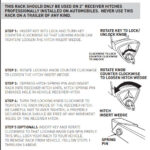The world of cycling is wonderfully diverse, encompassing everything from zippy road bikes to rugged mountain bikes. Within this spectrum lies a category that often sparks debate and curiosity: recumbent bikes. Recently, a discussion ignited online, questioning some common perceptions around these laid-back two-wheelers, and it’s time to delve deeper into the reality of recumbent bikes.
One of the most persistent claims is that recumbent bikes are inherently faster than traditional upright bikes. It’s true that in controlled, ideal conditions, recumbents have shattered speed records that upright bikes can’t touch. These records, however, are typically achieved on specially engineered bikes in environments like velodromes or perfectly flat courses. But what about the real world, the roads we actually ride on every day?
This is where the “recumbents are faster” mantra gets a reality check. Think about tackling hills, navigating city traffic, or riding on varied terrain. In such conditions, the advantages of recumbents become less clear-cut. While aerodynamic in certain respects, their performance can shift dramatically outside of those perfect scenarios. It’s not uncommon to see upright cyclists pulling ahead, particularly on climbs or when quick acceleration is needed. The terrain and riding style play a much larger role than simply the bike’s design in determining speed in everyday cycling.
Beyond the speed debate, there are other intriguing observations around recumbent bikes and their riders. It’s often noted, for instance, that the recumbent cycling community seems to be predominantly male. While women certainly ride recumbents, their presence appears less frequent in the visible landscape of recumbent riders. This raises interesting sociological questions. Is it simply a matter of historical trends, marketing focus, or are there perhaps comfort or design aspects that resonate more strongly with men?
Another lighthearted, yet frequently mentioned, observation is the prevalence of beards among male recumbent riders. While certainly not a scientific correlation, this recurring stereotype prompts further sociological musings. Does this hint at a particular subculture within cycling, a community that values a different aesthetic or set of priorities? It’s a reminder that cycling, in all its forms, is not just about the bikes themselves, but also about the people who ride them and the communities that form around these shared passions.
Ultimately, the discussion around recumbent bikes is a healthy one. It encourages us to look beyond simple labels and delve into the nuances of different cycling experiences. Recumbent bikes offer a unique perspective on riding, with their own set of advantages and considerations. Like any type of bike, they are suited to certain riders and riding styles more than others. By continuing the dialogue and exploring both the technical and sociological aspects, we gain a richer understanding of the diverse world of cycling and the many ways people enjoy the ride.

